There are some parts of a watch that every enthusiast should know. Learn the basics here.

Without wanting to alarm you, a watch has thousands of parts. Depending on how deep you want to get into the horological stratosphere, it can be quite a daunting topic.
Don’t worry, though. We have you covered. Here’s a guide to a watch’s essential parts to get you started on your watch-collecting journey.
Table of Contents
Can You Name the Parts of a Watch?
If the answer is “no, ” you must read this guide.
If you’re at the stage in life where you’re ready to buy your first watch, it helps to know what you’re talking about. People will look at it, and your friends will ask you questions about it.
Being able to name the parts of a watch is more important than you think. This is especially true if you want to keep up with those who collect watches frequently.
Picture yourself with friends waiting for the soccer game to start or sharing a few beers at the weekend. Your buddies are comparing notes and discussing the features of their favorite watches. You want to add something to the discussion but need to know more watch terminology.
Let’s find you some help. We can start with the basics and a diagram.
A Watch Anatomy Diagram: Parts of a Watch
Sometimes, the best way to examine the separate parts of a wristwatch is with a picture. For example, in this diagram, the parts of the watch all have a label. A diagram like this may help you familiarise yourself with the language often used in articles and product descriptions.
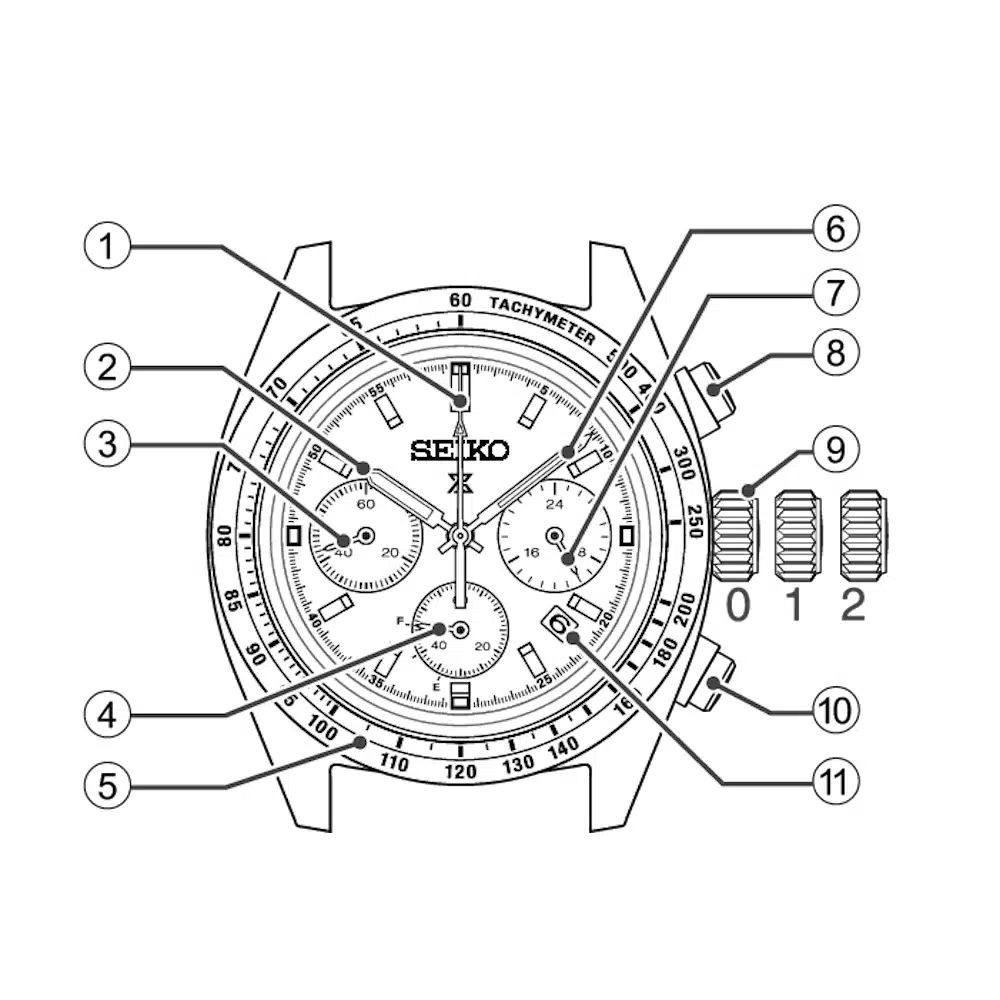
The diagram shown in this article is a Seiko watch. It features a typical three-counter (or tri-compax) layout. The format of the three sub-dials is legible and easy to extract information from.
Yet, when studying watch anatomy, you’ll see the most variation in the dial. Some will look like the diagram, and others won’t. Remember that there’s an entire universe of watch designs, features, dials, materials, and brands.
Different Watch Dials
Before we get into it, let’s talk about watch dials. Watch dials can vary from the simple three-handed type to the more complex one, like a perpetual calendar. Complications like the latter can give a watch a more “technical” look. The same is true for slide rule bezels and flyback chronographs.
One of the most common chronograph designs is the panda dial with black-on-white detailing (and the reverse panda, too). Dials can also be digital, analog, or both. They can feature date windows, power reserve indicators, and moon phase displays.
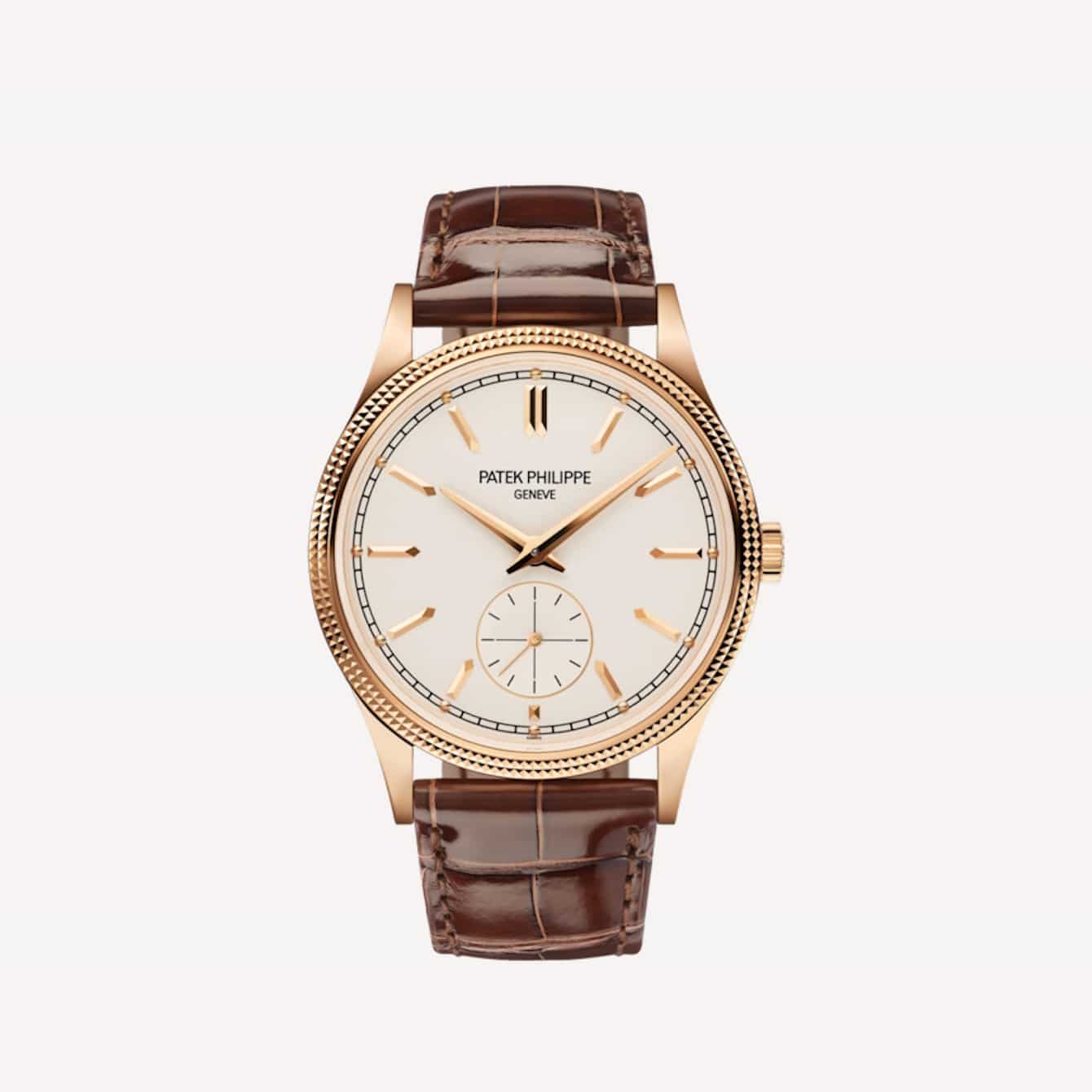
Dials can also be the skeleton type or feature guilloche surface patterns and hand-enameled finishes.
Unlike the diagram, a non-chronograph watch won’t feature the tachymeter scale. A tachymeter typically measures distance based on speed.
Watch Anatomy Basics
So, working from numbers 1 through 11 on the diagram, we have the chronograph stopwatch hand. It sits with the central hour and minute hands (numbers 2 and 6). Then, we have the feature labeled number 3—the small/running seconds function.
You can sometimes find this scale in a different location. The positioning of this feature depends on the chronograph layout itself.
Number 4 in this diagram is where the 30-minute counter sits. Again, the location for this feature varies. It often sits at 3 o’clock in many chronograph watches. Number 5 is the tachymeter scale for reading in conjunction with the chronograph secondhand.
This is best to use when wanting to time a moving object like a race car. At the 3 o’clock location is a 24-hour scale (number 7). This feature is next to the date window (number 11) at 4:30.
Chronograph watches come in mono-pusher and double-pusher styles. If your watch is the latter, you’ll have a pusher at 2 o’clock. You can use it to start and stop the chronograph timing (number 8). You’ll also get a 4 o’clock pusher to reset the chronograph timing (number 11).
The watch part you see listed as number 9 on the diagram is the crown. With mechanical watches, you can pull the crown out to several positions. Position 1 is for winding the automatic movement. Position 2 is for setting the date. Pulling the crown out to position 3 enables you to set the time.
The Different Parts of a Watch
Learning how to name the different parts of a watch may take quite a bit of time. Let’s go through some components that you may hear people talk about.
The Case
The case is the main body of a watch. Manufacturers use many different materials for the case, such as steel, titanium, ceramic, gold, or carbon. The case has several parts, including a case back and crown, which contains the mechanical movement.
The Bezel
The bezel is the ring on top of the dial. Sometimes, this can have a function. It can rotate to align with the minute hand when measuring elapsed time underwater. If equipped with a tachymeter scale, you can use it to calculate speed based on distance.
The Dial
As already mentioned, the dial comes in various styles. Sometimes, a dial has sub-dials that offer additional timings. These include a 30-minute function, a 12-hour totalizer, a running seconds function, or a power reserve display.
The Crown
You can locate the crown at 3 o’clock, where you can use it to wind the movement inside a watch. The crown also enables you to access the date and time.
The Crystal
A strong piece of crystal seals the front of a watch. Plexiglass, Hesalite, and mineral glass are features in older watches. Modern timepieces, however, use sapphire crystal glass. This material is strong, scratch-resistant, and can feature anti-reflective technology.
The Lugs
The lugs help you to gauge the size of a watch. They also tell you the measurement you need when you want to buy a new watch strap. The case often holds the lugs with spring pins or screw pins, the same ones you see in the links of a bracelet.
The Movement
The movement is the part of a watch that comprises a whole host of individual components. These small parts work in synergy with one another to keep accurate time. Winding a watch helps to understand the process that provides energy to the movement.
The Helium Escape Valve
A dive watch sometimes features a helium escape valve at 2 o’clock or 10 o’clock. This single-way purge valve opens when pressure becomes too great inside the case.
The Pushers
The two push-pieces you see flanking the crown sit on a chronograph watch at 2 and 4 o’clock. They can activate a stopwatch timing, pause it, or restart a new one.
The Different Parts of a Watch Face
It’s essential to learn the different parts of a watch face. The dial is the most used and, for many, the most important. It’s what gives the timepiece its character and individuality.

Some dials are vintage and military-inspired. Others are ultra-contemporary and minimalist, and some feature complications we covered earlier. Here are some dial features you’ll want to familiarise yourself with.
Let There Be Light
One of the main features you’ll hear people talk about on a watch dial is luminosity. These days, most dials feature a material called Super-LumiNova.
A light source charges the photoluminescent material and emits a rich glow during the night. Depending on the type, the glow can vary from blue to turquoise to bright green. In the daytime, lume-coated features can appear cream or white.
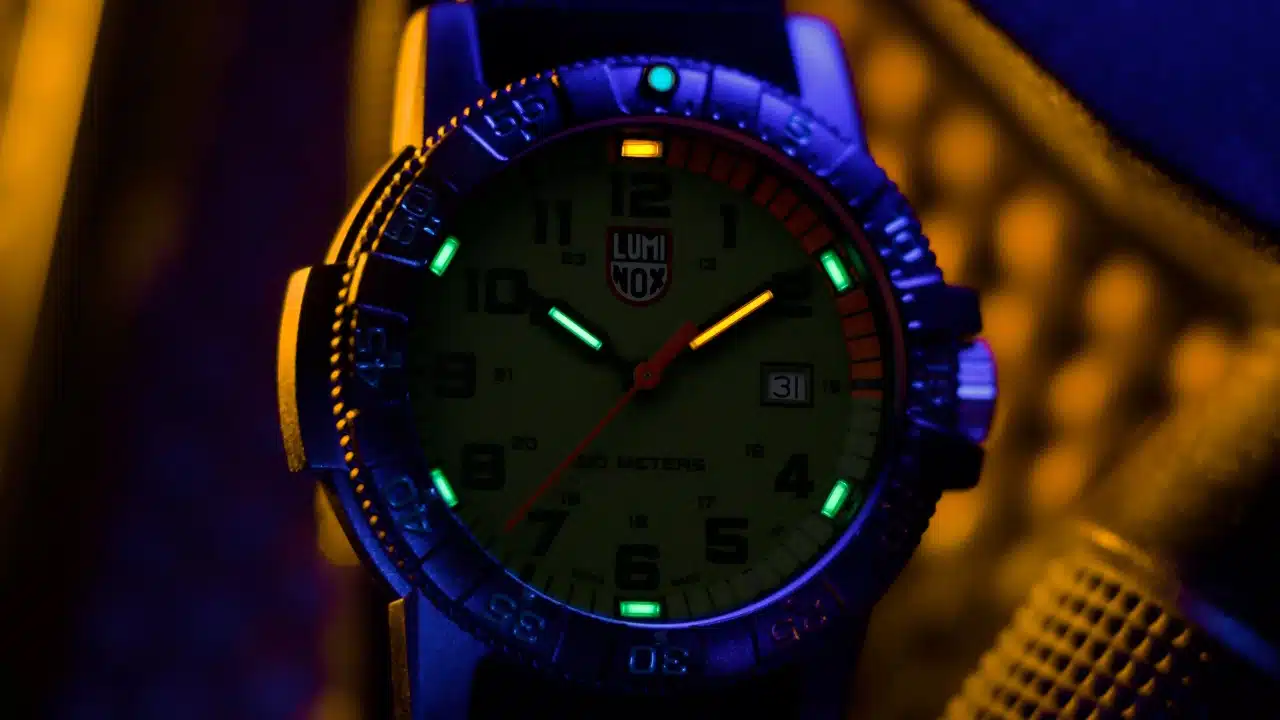
Some brands use an alternative to this material, known as tritium gas tubes. Ball Watch Company and Luminox are leaders in this area. Phosphorus powder line tubes contain tritium. Both materials interact with one another, emitting light.
Since the tubes of these tritium watches have a strong seal, the chemical reaction continues, producing a constant light source. The tubes appear normal during the day and bright during the night.
Dial Textures
As mentioned, dials are a large field to cover. You can choose from gilt to enamel dials, crosshair effects, and even gradient finishes.
One of the most common finishes on a dial is the guilloche effect. Sometimes, artisans achieve this via an engine turning process or a hand-operated rose engine. The unique engraving gives a beautiful wave effect.
Other dial effects include Tapisserie dials, like those on the surface of Audemars Piguet watches, and linen dials. Rolex has experimented with the material-type effect of linen dials in the past. You may also recognize the waffle effect if you know the Tissot PRX.
Hands
There are so many different types of watch hands to choose from. From lancet-shaped A. Lange & Söhne hands to the famous Breguet style, hands truly define a watch’s character. My advice is to research all the different designs and decide which you like the most.
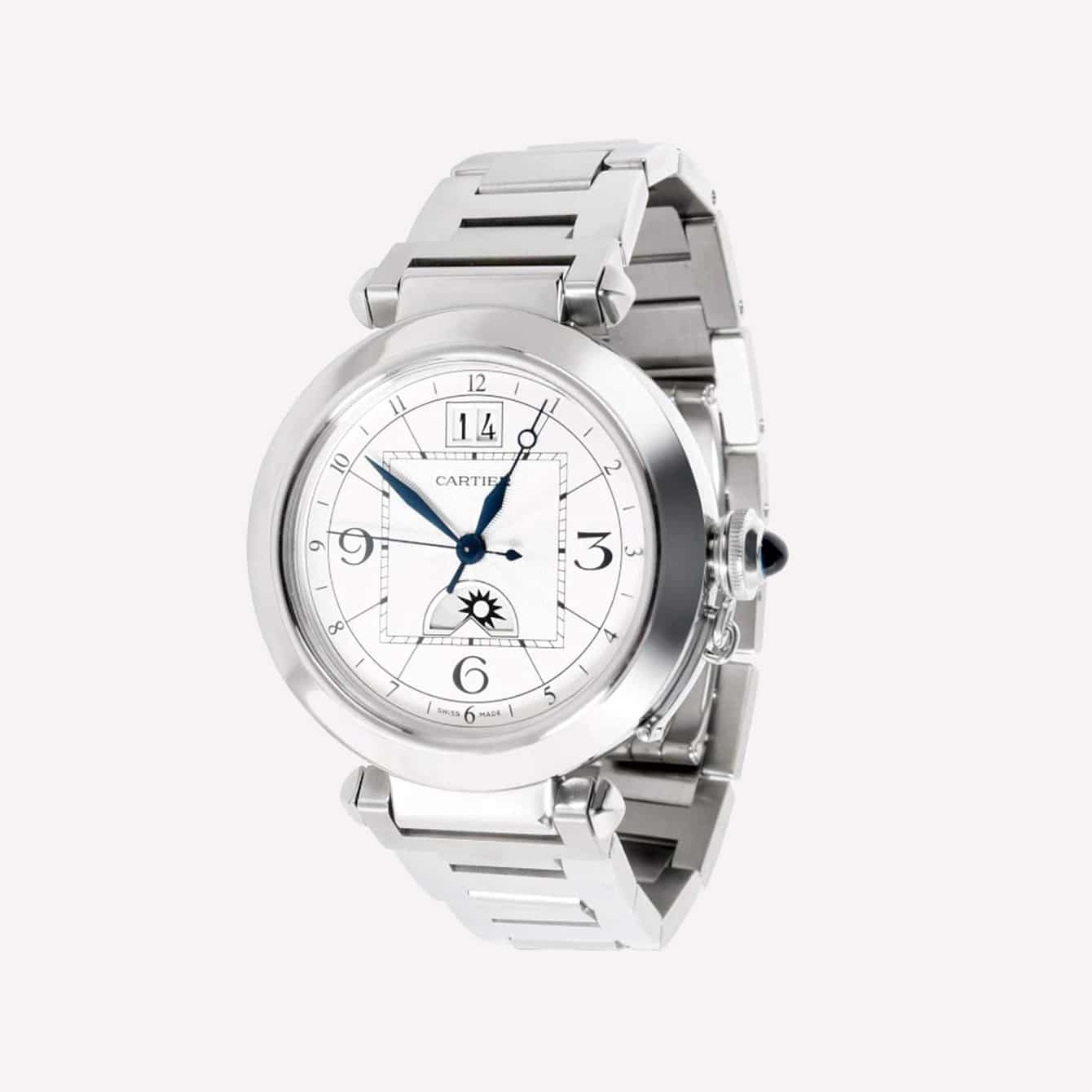
While some hands, like the baton type, are minimalist, others, like the cathedral type, suit pilot and military watches better. Sometimes, your decision will lie with the watch genre you prefer most.
The Takeaway
The parts of a watch, or at least the basic ones, are easy to learn. From case components to features on a dial, they all define the overall character of a timepiece.
Exploring the different watch configurations is where the fun lies in collecting timepieces. With endless variations available, you can try other designs to see which better suits your taste.
Now you’ve learned the various components of a watch, you can confidently share your opinion on the topic. As you become more familiar with watch terms, you can use them to grow your knowledge.
Do you want to read more watch-related content? Sign up for our newsletter at The Slender Wrist today!
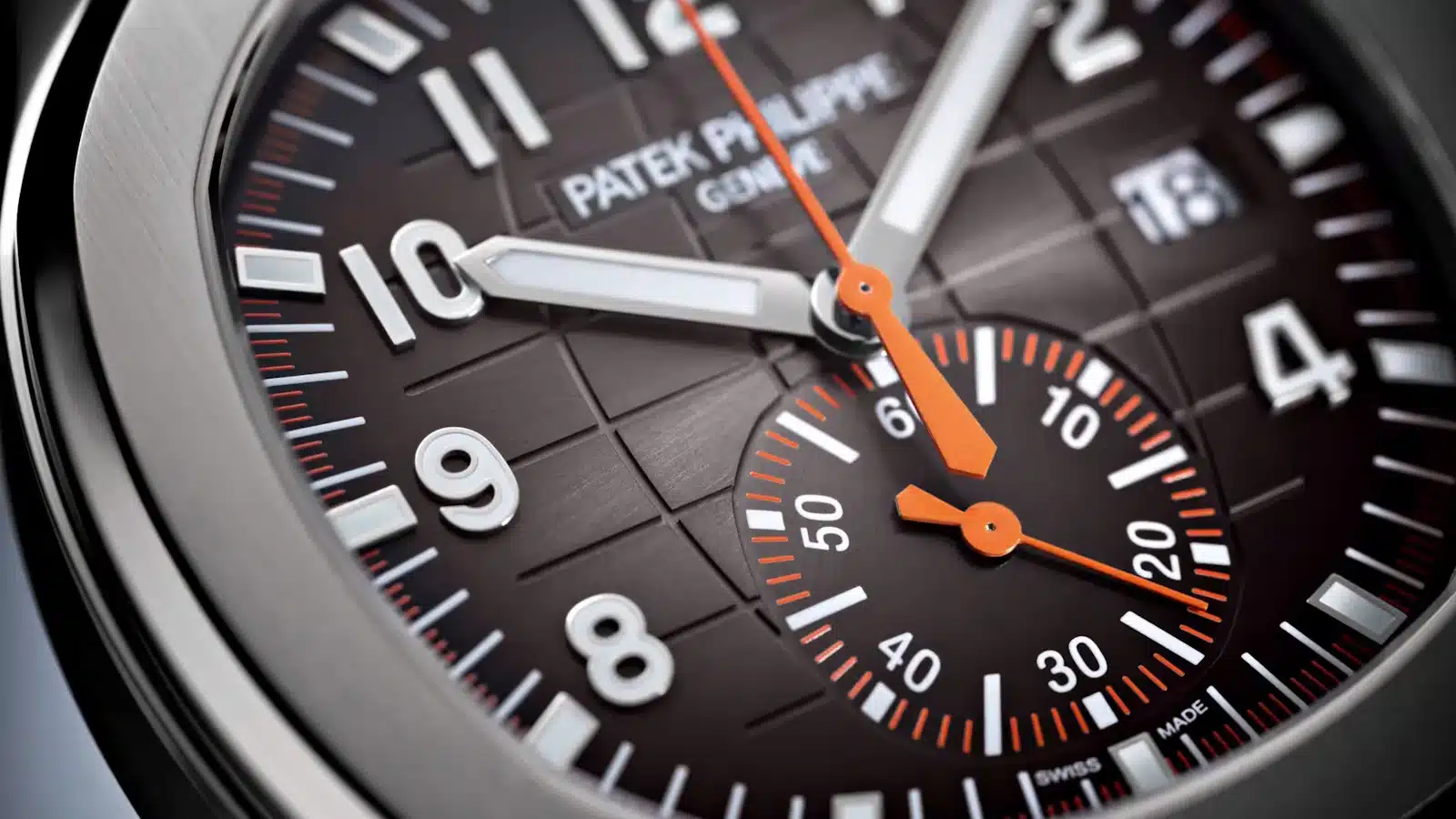
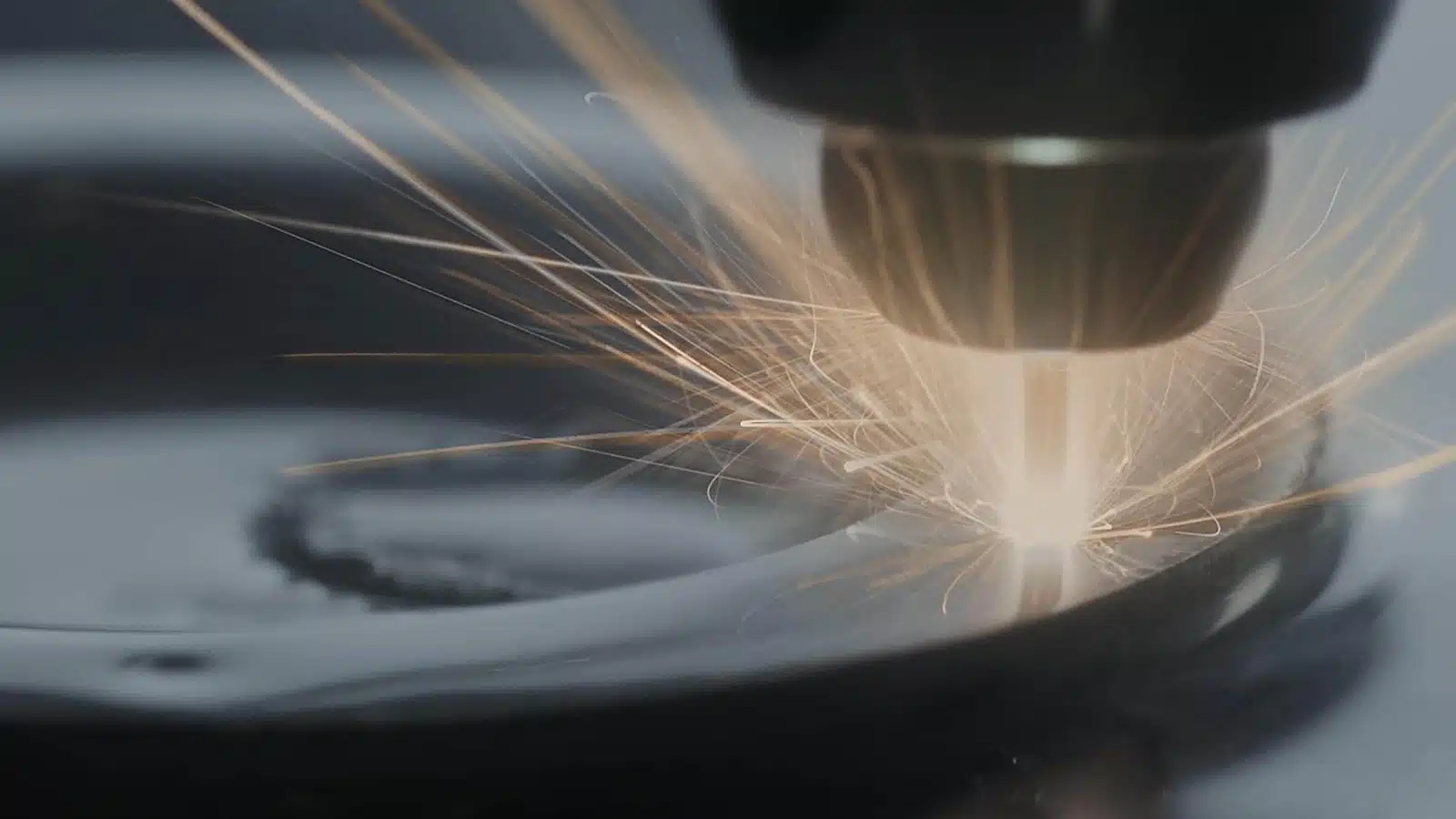
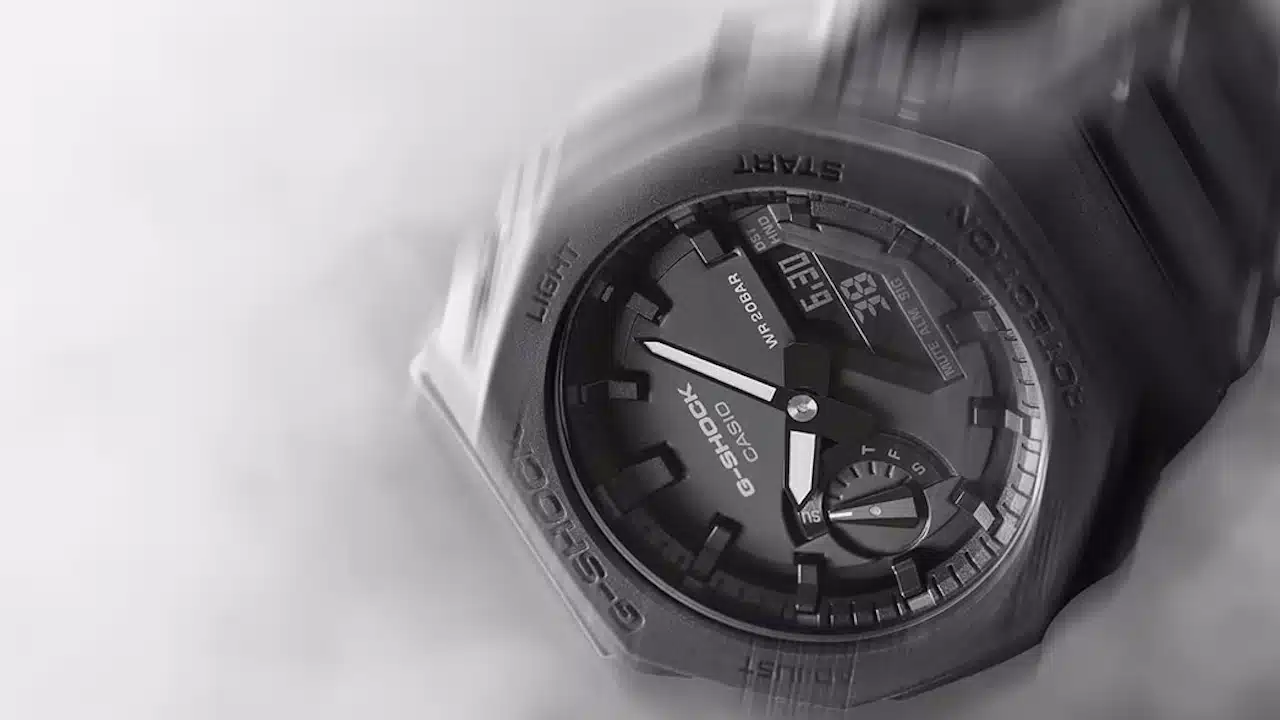
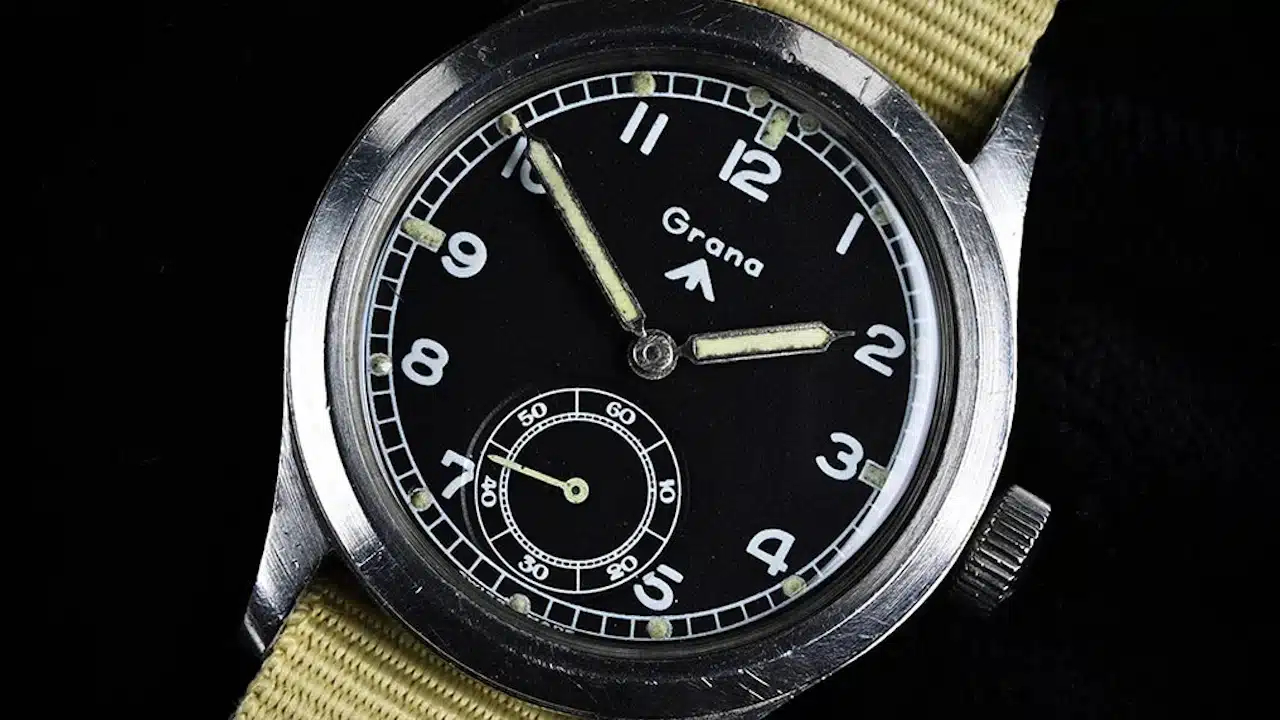
Leave a Reply